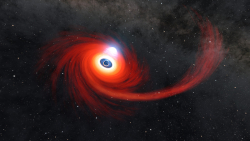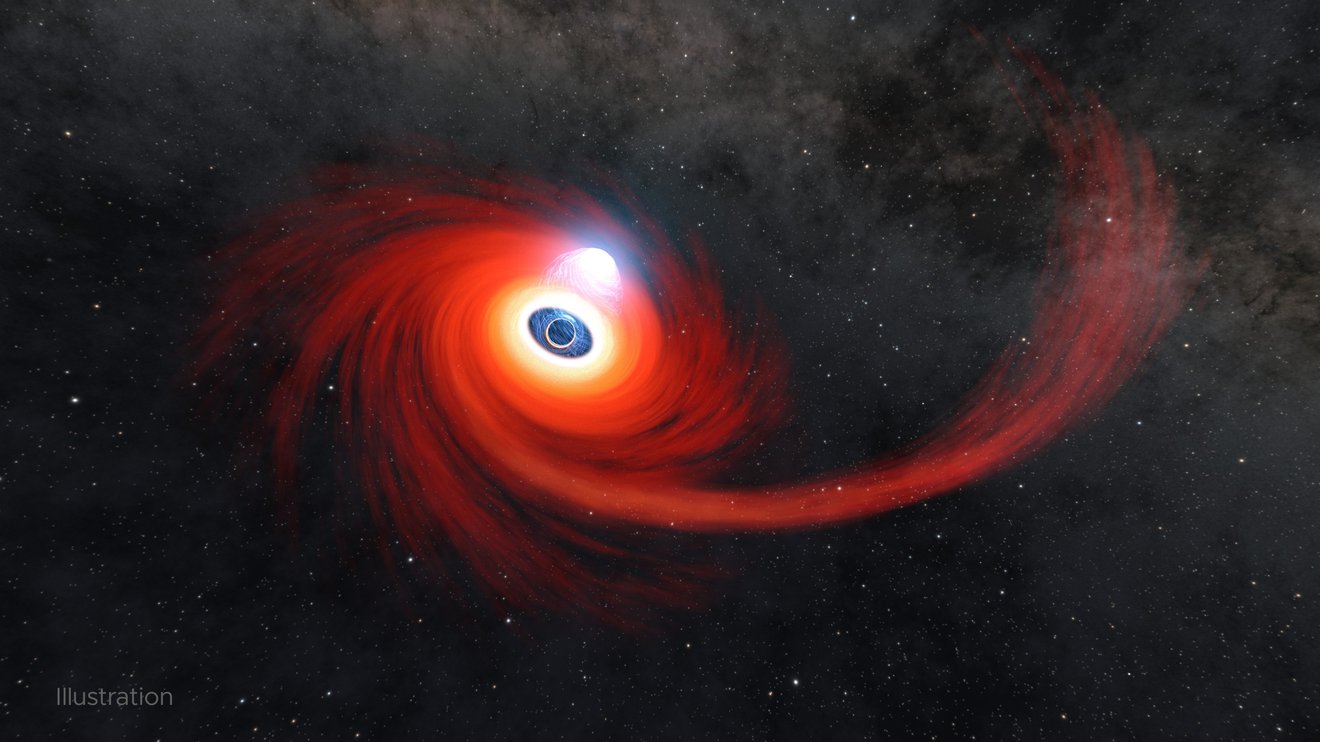 The Dangers of Wandering in the Dark
The Dangers of Wandering in the Dark
It seems not unexpected but somewhat unbelievable how frequently supermassive black holes at the centers of galaxies swallow stars. The first evidence of this came from tell-tale X-ray flares associated with the centers of galaxies, as seen in the 1990's by the ROSAT X-ray satellite observatory. Since then, these awful events have been witnessed by more modern X-ray observatories, like the Chandra X-ray Observatory, XMM-Newton and others. The illustration above shows how a star might get pulled apart by a black hole, spiralling beyond the event horizon, never to return. Each new observation reveals details of how differences in the pull of the black hole's gravity pull the star apart. They also provide an important view of the rather messy eating habits of black holes, how these monsters accrete (and expel) matter, and how they grow in mass and size. In 2021 the Zwicky Transient Facility at the Palomar Observatory in California, in its wide-field survey, detected a mysterious brightening in the night sky. Followup X-ray observations with Swift, NICER, and NuSTAR showed that this event was indeed caused by a star being shredded by a black hole at the center of a galaxy, a so-called "tidal disruption event" (or TDE for short). The unique ability of NuSTAR to resolve the high-energy X-ray variability, compared to the lower-energy variations seen by NICER and Swift, provided scientists with one of the most detailed views of how the star was being eaten. These studies show in detail how the TDE produces a corona, an asymmetric region of hot plasma around the black hole. They also show how the remains of the star form a disk around the black hole, and how this disk suddently became unstable and thinner as material fell into the black hole.
NuSTAR: Unusually Close Glimpse of Black Hole Snacking on Star
| << Previous HEAPOW | High Energy Astrophysics Picture of the Week | Next HEAPOW >> |
